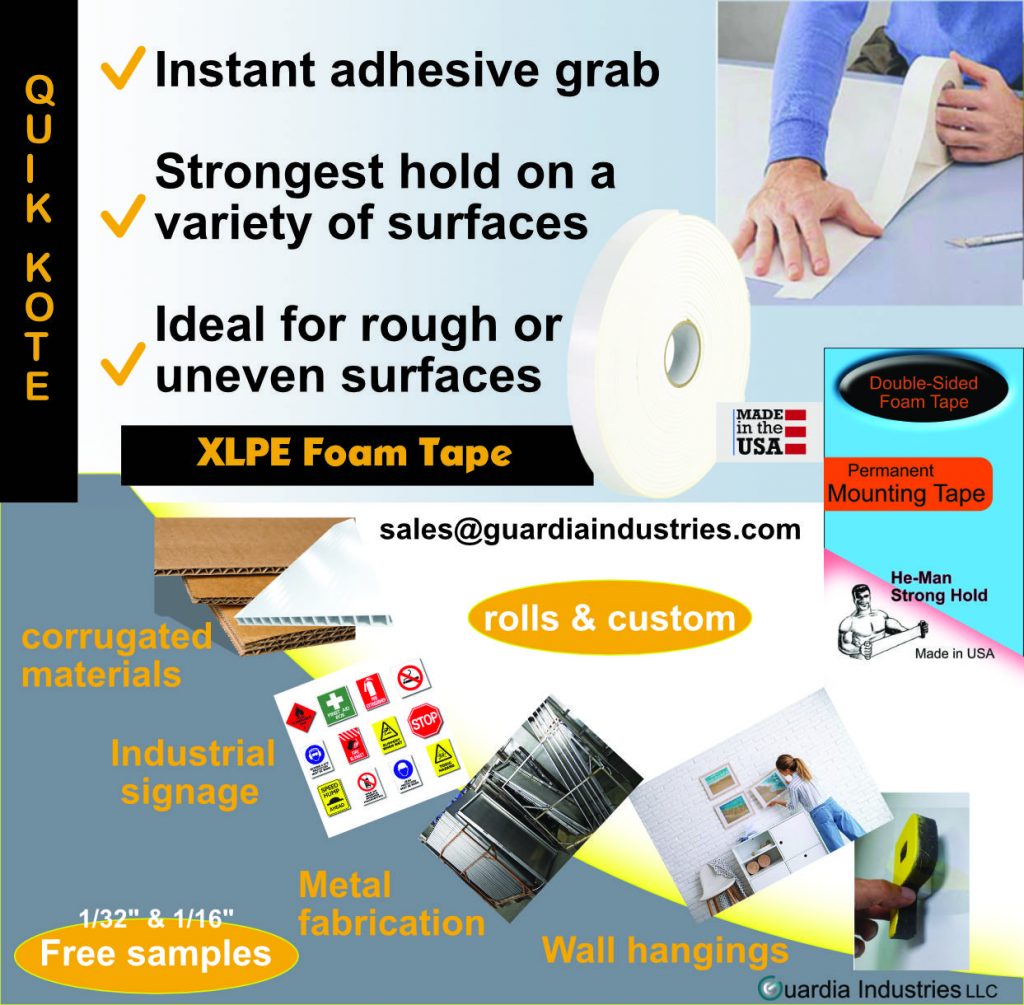Adhesive foam tapes are a type of pressure-sensitive tape that consists of a foam carrier (the middle tape layer) with an adhesive coating on one or both sides. They are used in a variety of industrial applications for bonding, sealing, and cushioning.
The main reason for using a foam tape is that you need that extra thickness with good cushioning to fill in gaps.
When filling in gaps on textured surfaces, you get a stronger bond since the adhesive could now anchor closer to the gap voids.
Some common characteristics of adhesive foam tapes include:
High conformability: Adhesive foam tapes can conform to irregular or uneven surfaces, making them ideal for sealing gaps and joints.
Excellent insulating properties: The foam carrier of adhesive foam tapes can provide insulation against heat, cold, and sound.
Good resistance to weathering: Adhesive foam tapes can resist UV radiation, water, and other environmental factors, making them suitable for outdoor use.
Easy to apply: Adhesive foam tapes can be easily cut to size and applied by hand or with a dispensing tool.
There are many different types of adhesive foam tapes available, including closed-cell foam tapes, open-cell foam tapes, and high-temperature foam tapes. The choice of adhesive foam tape will depend on the specific requirements of the application, such as the type of substrate, the temperature and humidity conditions, and the required bond strength.
The most commonly used foam tape is polyethylene foam (cross-linked) with rubber adhesive. Rubber adhesive has an instant bond and contemporary rubber adhesives could also be used outdoors.
Some common industrial applications for double-sided adhesive foam tapes include:
- Sealing gaps and joints in construction and HVAC systems – Foam tapes provide long-term resistance to moisture, air, and dust infiltration, making them ideal for weatherproofing windows, doors, ductwork, and panels.
- Cushioning and damping in automotive and aerospace industries – Their ability to absorb vibration and reduce noise makes them effective for interior trim, body panels, and equipment enclosures where passenger comfort and structural integrity are critical.
- Mounting and bonding in the signage and display industry – Foam tapes create a clean, invisible bond without mechanical fasteners, enabling sleek designs while withstanding outdoor conditions such as UV exposure and temperature changes.
- Insulating and sealing in electrical and electronic applications – They help prevent short circuits, reduce thermal bridging, and protect sensitive components from dust, moisture, and vibration.
- Appliance assembly – Frequently used in refrigerators, washing machines, and other consumer appliances to secure panels, reduce vibration, and improve long-term product reliability.
- General manufacturing and metal fabrication – Ideal for bonding dissimilar materials such as glass-to-metal or plastic-to-metal, accommodating surface irregularities while maintaining a durable hold.
Why selection matters:
Choosing the right adhesive foam tape depends on several factors, including substrate type (metal, plastic, glass, or painted surfaces), environmental exposure (temperature extremes, humidity, UV), load requirements, and longevity expectations. Partnering with a tape supplier or manufacturer can ensure the tape selected meets both performance and cost requirements.

